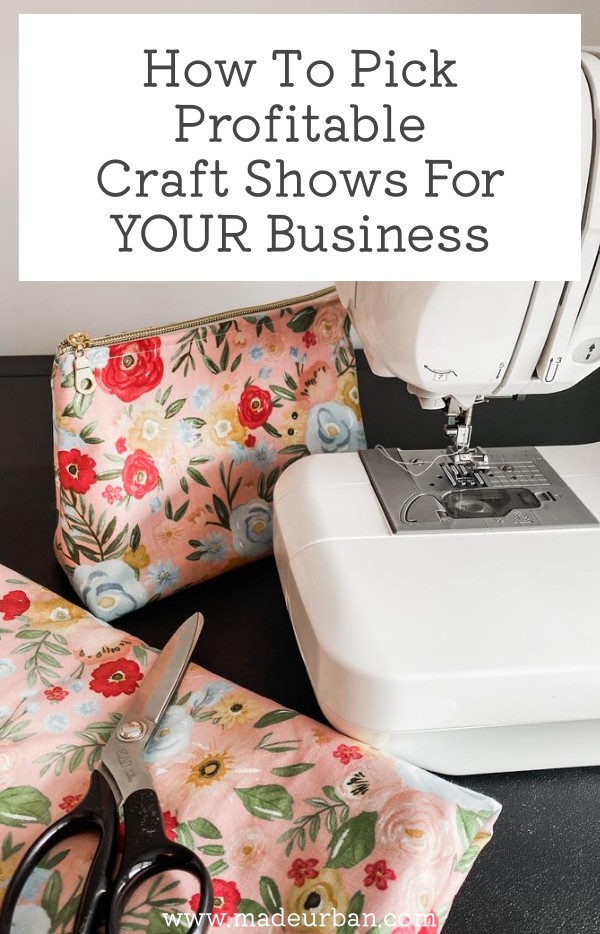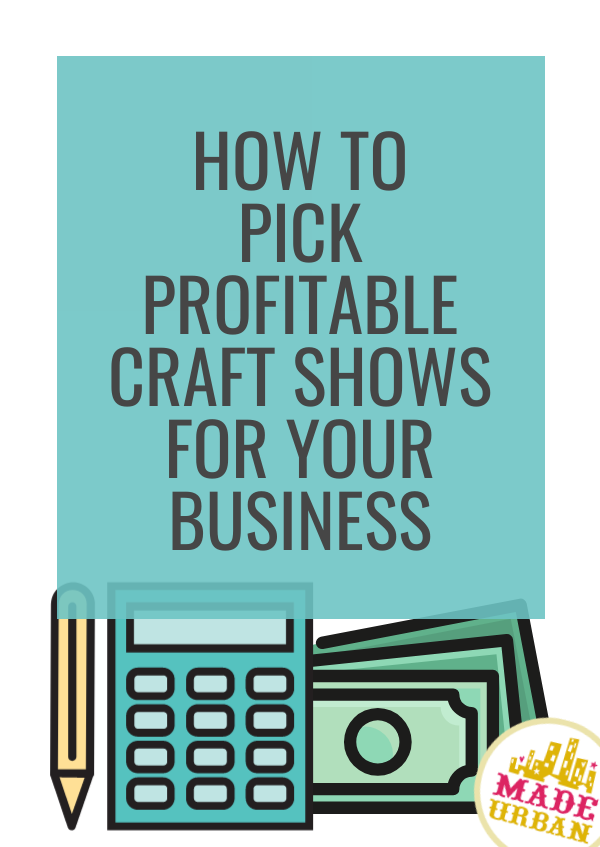How To Pick Profitable Craft Shows for YOUR Business
Not every craft show in your city, or every craft show you’re invited to, will be a fit for your business and its products.
Even the biggest and most popular craft shows may not be right for you.
Here’s what to review.

1 – Target market
First and foremost, get an idea of who the craft show is targeting.
What’s the overall style of the event’s branding and marketing materials? Does it feel handmade and artisan-focused, or more like a community fair with a mix of vendors?
If the event promotes itself as a “holiday gift market,” you might expect shoppers looking for affordable, ready-to-gift items. If it’s an “artisan market” or “maker fair,” the crowd may value craftsmanship and be willing to pay higher prices.
You can usually tell a lot from the event’s website, poster designs, or social media presence.
Look at the language, imagery, and even the types of products they highlight. Do they match your ideal customer?
2 – Other vendors
You may not be able to gather this information if it’s a new show and/or you’re applying early.
But if it’s a repeating event or you’re applying after they started accepting applications, check their website and social media pages to see what type of vendors have participated in the past or that have already been accepted.
Ask yourself:
- Is there a good mix of product types?
- Are there too many vendors selling similar items (like jewelry or crochet)?
- Do the other vendors appear to be hobbyists or full-time makers?
Too much overlap can make it harder to stand out, while too wide a range (from resellers to fine artists) can lead to mixed shopper expectations.
3 – Price points
If you do have information on the types of vendors who will be attending, and/or vendors who have participated in the past, try to get an idea of their product’s price points.
You don’t want your products to seem overpriced or underpriced in comparison.
Both can work against you: high prices might scare off budget-focused shoppers, while low prices might make your work look less valuable than it is.
Also consider the type of crowd the event tends to draw. Are shoppers there to browse and enjoy the day, or do they come ready to buy?
If you typically sell higher-end items, you’ll do better at events where attendees appreciate artisan quality and are comfortable spending more.
4 – Costs
Estimate your total costs for the event.
- Booth fees
- Parking
- Travel expenses (gas, mileage, and possible stay overnight)
- Items you must buy (e.g. if you must buy a folding table because they don’t provide them)
- Etc.
Then estimate how many products you must sell to simply cover those costs.
You’ll need to take your average profit from each sale (e.g. if my average price point is $20 and $10 of that is profit) and divide your costs by that number.
For example:
If you’ll spend $300 total, and your average profit per product is $10, you’ll need to sell 30 products just to break even.
Then ask yourself — does that seem realistic based on your past show performance, booth size, and expected crowd size?
If booth fees are high and your price points are lower, the show may not make financial sense.
5 – Marketing efforts
See what type of effort the organizer is putting into marketing the event.
- Do they have active social media accounts promoting vendors?
- Are they featured in local newspapers, online event calendars, or community boards?
- Are vendors tagging and mentioning the event (a sign they’re excited and engaged)?
A well-promoted event helps drive more qualified shoppers to your booth. If the organizers are quiet online and there’s little buzz, attendance could be low—even if the vendor lineup looks great.
6 – Event atmosphere & logistics
If possible, visit the event before applying next time. Seeing it firsthand gives you a clear sense of crowd size, atmosphere, and organization.
You can also note practical details:
- Is it indoors or outdoors?
- Are booths crowded together or well-spaced?
- Is the setup easy, and is parking nearby?
Sometimes the “feel” of an event is the deciding factor—it should align with your brand’s style and the shopping experience you want to offer.
Choosing the right craft show isn’t just about booth availability—it’s about strategy.
A little research before applying can save you money, time, and frustration, and help you focus on the shows where your ideal customers shop.
When your audience, price points, and brand fit the event, everything feels easier—sales flow naturally, conversations come easily, and your booth truly stands out.


Hey, I’m Erin 🙂 I write about small business and craft show techniques I’ve learned from being a small business owner for almost 2 decades, selling at dozens of craft shows, and earning a diploma in Visual Communication Design. I hope you find my advice helpful!
